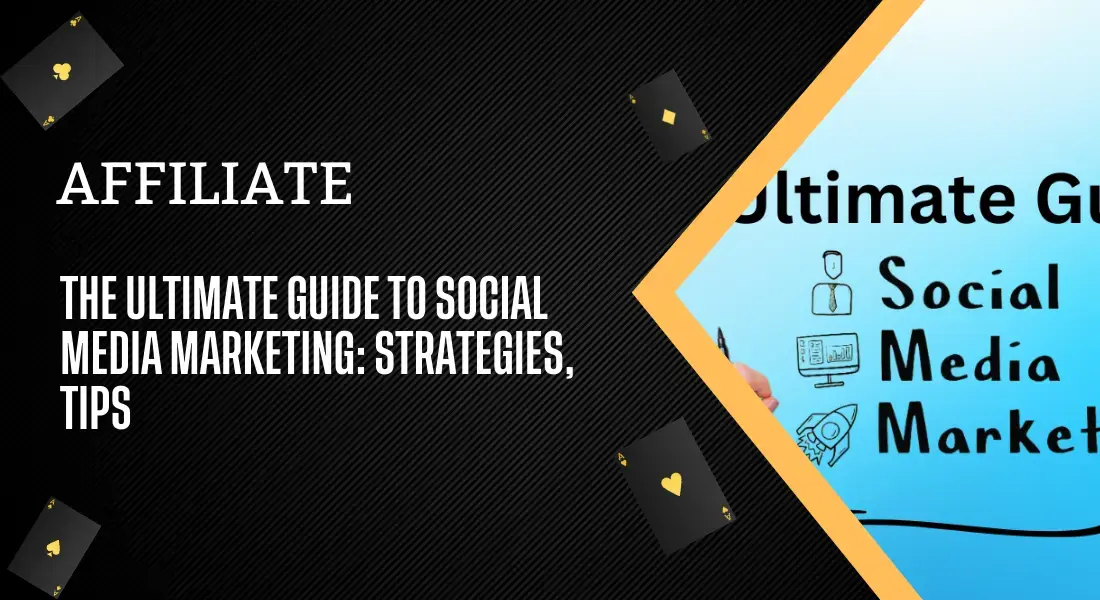Social media marketing has become a cornerstone of modern digital marketing strategies. With billions of users worldwide, social media platforms offer unparalleled opportunities for businesses to engage with their audience, build brand awareness, and drive sales. This comprehensive guide will walk you through the essentials of social media marketing, from developing a strategy to implementing effective tactics and measuring success. We'll also address common questions in the FAQ section to help you confidently navigate the world of social media marketing.
Understanding Social Media Marketing
What is Social Media Marketing?
Social media marketing involves using social media platforms to promote your products or services, engage with your audience, and build brand presence. It encompasses various activities, including creating and sharing content, running advertisements, and interacting with followers.
Why is Social Media Marketing Important?
Social media marketing is crucial because it helps businesses connect with their audience personally, build brand loyalty, and drive website traffic. It also provides valuable insights into consumer behavior and preferences, allowing companies to tailor their strategies for better results.
Developing Your Social Media Marketing Strategy
Define Your Goals
Start by setting clear, measurable goals for your social media marketing efforts. Common goals include increasing brand awareness, generating leads, boosting website traffic, and improving customer engagement. Your goals will guide your strategy and help you measure success.
Identify Your Target Audience
Understanding your target audience is essential for creating content that resonates with them. Research your audience's demographics, interests, and behaviors to tailor your content and messaging accordingly.
Choose the Right Platforms
Only some social media platforms are suitable for some businesses. Choose platforms that align with your target audience and business objectives. For instance, Instagram and Pinterest are great for visual content, while LinkedIn is ideal for B2B marketing.
Create a Content Calendar
Develop a content calendar to plan and organize your posts. A content calendar helps ensure consistency, allows you to align your posts with key dates and events, and makes managing your social media efforts easier.
Crafting Engaging Content
Create High-Quality Content
Your content should be engaging, informative, and relevant to your audience. Use high-quality images, videos, and graphics to capture attention and enhance your message. Avoid overly promotional content and focus on providing value.
Use a Mix of Content Types
Diversify your content to keep your audience engaged. Mix your posts with articles, infographics, videos, polls, and user-generated content. This variety helps maintain interest and encourages more interactions.
Incorporate Branding
Ensure your content reflects your brand's voice, style, and values. Consistent branding helps reinforce your identity and makes your content more recognizable.
Optimize for Each Platform
Tailor your content to fit each social media platform’s specifications and best practices. For example, use appropriate image sizes and formats and write platform-specific captions and hashtags.
Engaging with Your Audience
Respond to Comments and Messages
Actively engage with your followers by responding to comments and messages. Prompt responses show that you value your audience's input and foster a sense of community.
Run Contests and Giveaways
Contests and giveaways are effective for increasing engagement and attracting new followers. Ensure that the prizes are relevant to your audience and that the rules are clear.
Use Polls and Surveys
Polls and surveys are great tools for gathering feedback and insights from your audience. They also encourage interaction and can provide valuable data for refining your strategies.
Monitor Brand Mentions
Track brand mentions on social media. Tools like social listening software can help you identify conversations and respond to feedback promptly.
Running Social Media Advertisements
Set Up Targeted Ads
Social media platforms offer robust targeting options to help you reach your desired audience. Define your audience based on demographics, interests, and behaviors to ensure the right people see your ads.
Choose the Right Ad Formats
Select ad formats that align with your goals and resonate with your audience. Options include images, videos, carousels, and story ads. Each format has its advantages, so choose based on your campaign objectives.
Monitor Ad Performance
Track the performance of your ads using analytics tools provided by the platforms. Monitor metrics such as impressions, clicks, conversions, and ROI. Use this data to optimize your ad campaigns for better results.
Adjust Based on Data
Analyze the performance data and make adjustments to your ads as needed. A/B testing different ad creatives and targeting options can help you identify what works best.
Measuring Success and Analyzing Results
Track Key Metrics
Track key metrics such as engagement rate, reach, impressions, click-through rate, and conversion rate to measure the success of your social media marketing efforts and assess the effectiveness of your strategies.
Use Analytics Tools
Leverage analytics tools provided by social media platforms and third-party tools to gather detailed insights. These tools offer valuable data on audience behavior, content performance, and campaign effectiveness.
Evaluate and Adjust
Regularly review your social media performance and make data-driven adjustments to your strategy. Continuous improvement ensures that your efforts remain effective and aligned with your goals.
Mastering social media marketing involves more than just posting content. It requires a strategic approach, consistent effort, and a willingness to adapt based on performance and trends. Following this guide, you'll be well-equipped to create a successful social media marketing strategy that drives engagement, builds brand loyalty, and achieves your business goals. Keep experimenting, analyzing, and refining your approach to stay ahead in the dynamic world of social media.
FAQs
How often should I post on social media?
The ideal posting frequency depends on your platform and audience. Generally, aim for at least 3-5 times per week on platforms like Facebook and Instagram, while LinkedIn may require less frequent posting. Monitor engagement and adjust as needed.
What are the best times to post on social media?
Optimal posting times vary by platform and audience. Use analytics tools to determine when your audience is most active. Posting during peak hours, like late mornings and early evenings, can yield better results.
How can I increase my social media followers?
To increase followers, create high-quality, engaging content, use relevant hashtags, run contests or giveaways, and collaborate with influencers or other brands. Consistent posting and interaction with your audience also help grow your following.
How do I handle negative comments or feedback?
Address negative comments professionally and promptly. Acknowledge the issue, offer a solution, and take the conversation offline if necessary. Handling negative feedback gracefully can improve your brand's reputation.
What is social media ROI, and how can I measure it?
Social media ROI (Return on Investment) measures the effectiveness of your social media efforts in achieving your goals. Calculate ROI by comparing the cost of your social media activities with the revenue or value generated. Use metrics such as conversions, sales, and engagement to assess ROI.
Should I use social media management tools?
Social media management tools can streamline your efforts by allowing you to schedule posts, monitor engagement, and analyze performance from a single platform. Popular tools include Hootsuite, Buffer, and Sprout Social.
How can I stay updated on social media trends?
Follow industry blogs, subscribe to newsletters, and join social media marketing groups or forums. Stay informed about platform updates, new features, and emerging trends to keep your strategies current.
How do I choose the right social media platform for my business?
Select platforms based on your target audience and business goals. Research where your audience spends their time and choose platforms that align with your content type and marketing objectives.
What are some common mistakes to avoid in social media marketing?
Common mistakes include inconsistent posting, ignoring audience engagement, over-promotion, and neglecting analytics. Avoid these pitfalls by maintaining a consistent presence, actively engaging with your audience, and using data to guide your strategies.
How can I collaborate with influencers on social media?
Identify influencers who align with your brand and have a relevant audience. Reach out to them with a clear proposal for collaboration, including the benefits for both parties. Develop a mutually beneficial partnership that enhances your brand's visibility and credibility.
For the latest updates on Australian Bookmaker, visit iGaming. If you want to wager on top-notch casinos, start with our comprehensive reviews of the best iGaming Australia. We cover top game providers, locations, and more to help you find the perfect betting destination on your online betting.



